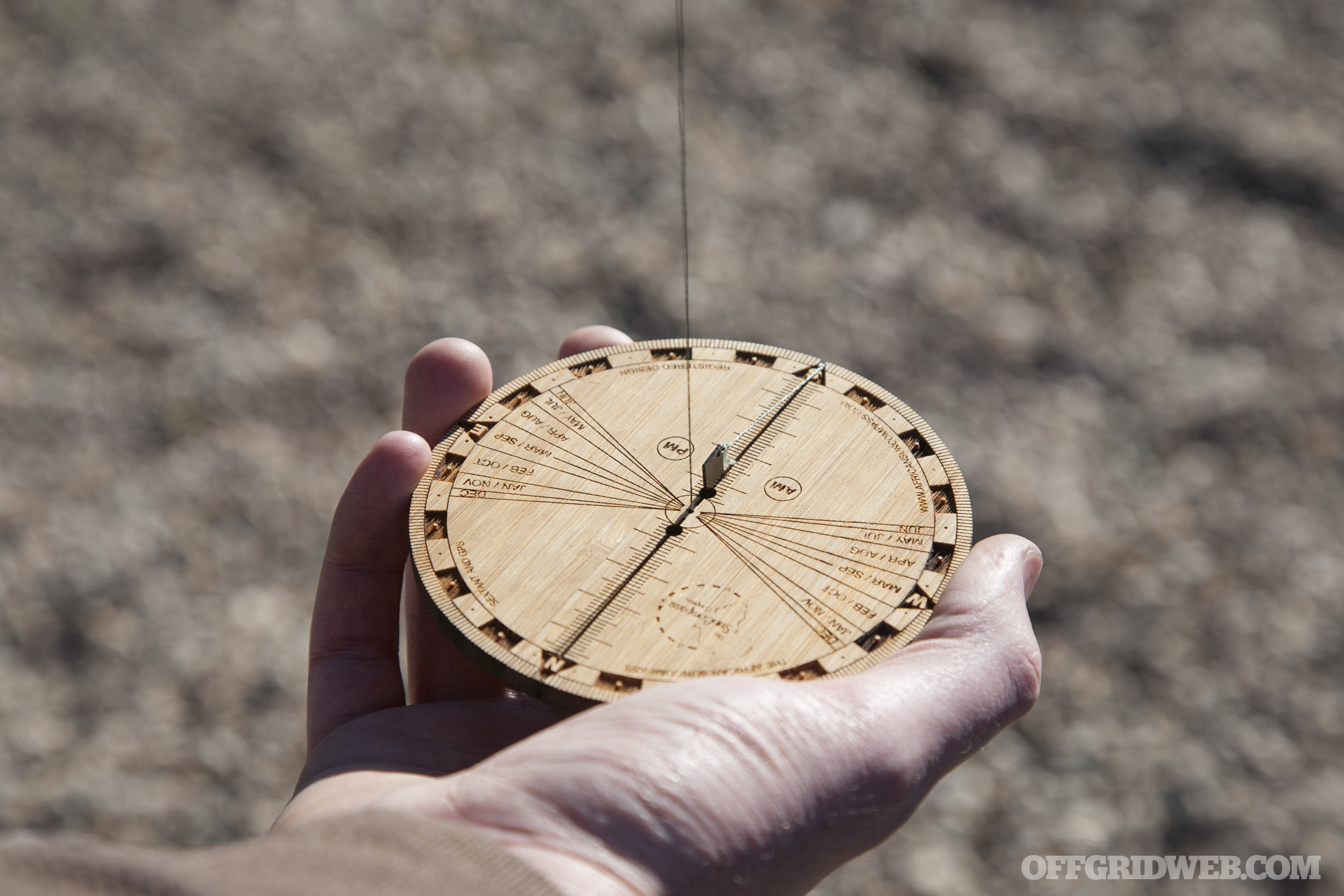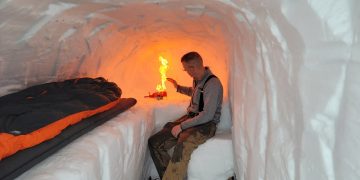Survival in the wilderness is a test of skill, adaptability, and resourcefulness. One of the fundamental tools many outdoor adventurers consider essential for navigating through the wild is a compass. But is it possible to survive and find your way without this trusty navigational tool? The answer might surprise you.
In this article, we will explore various survival strategies for navigating the wilderness without a compass. We’ll look at natural signs, techniques, and strategies that could help you not just survive, but thrive when lost or off the beaten path. From understanding the sun’s movement to using landmarks and even the stars, there’s a variety of methods that allow you to orient yourself in the wild without the need for a modern tool.
1. The Need for Navigation in the Wilderness
Before we dive into survival techniques, it’s crucial to understand why navigation is important in the first place. When venturing into the wilderness, you can easily get lost, especially if you are in unfamiliar terrain. Without a compass or any form of directional tool, you could wander aimlessly, increasing your chances of dehydration, exhaustion, or encountering dangerous wildlife. This is why knowing how to use natural navigation methods is crucial for wilderness survival.
However, while compasses are useful, they aren’t always necessary. With the right knowledge, you can confidently navigate without one. Let’s break down some of the methods that have been used by hikers, explorers, and indigenous cultures for centuries.
2. Understanding the Sun: Your Natural Compass
One of the oldest and most reliable ways to determine direction is by using the sun. The sun rises in the east and sets in the west, which gives you a basic understanding of where you are. While this might seem obvious, there are some finer details that can make this method even more reliable.
The Sun’s Path
In the Northern Hemisphere, the sun will always be to the south around midday (when it’s highest in the sky). In the Southern Hemisphere, the sun is generally to the north around noon. Knowing this, you can estimate your cardinal directions with a fair degree of accuracy.
The Time of Day
The time of day also plays a big role in understanding where you are. The earlier in the day it is, the closer the sun will be to the east. By noon, it will be directly overhead or slightly to the south (for those in the Northern Hemisphere). As the day moves toward the afternoon, the sun will move to the west, guiding you through the last leg of your journey.

Shadows and the Sun
A more precise method for determining direction involves using the position of the sun’s shadows. You can use a stick and a watch (even a rough one) to create a rudimentary sundial. By marking the tip of the shadow every 10 minutes, you’ll be able to estimate the cardinal directions fairly accurately.
3. Using Stars for Navigation: The Nighttime Navigator
When the sun sets, the sky becomes your compass. Star navigation has been used for centuries by sailors, explorers, and nomads, and it’s still an effective way to find your bearings in the wilderness at night.
The North Star (Polaris)
In the Northern Hemisphere, the North Star (Polaris) is one of the most reliable navigational tools at night. It remains almost stationary in the sky, indicating true north. To find the North Star, locate the Big Dipper constellation. The two stars at the end of the Big Dipper’s “bowl” point directly to Polaris. By knowing this, you can confidently orient yourself to the north.
The Southern Cross
In the Southern Hemisphere, the Southern Cross constellation is a great tool for finding south. The Southern Cross is a distinctive group of stars that points to the southern celestial pole. By drawing an imaginary line through the long axis of the Southern Cross, you can find the approximate position of the South Pole, helping you orient yourself accordingly.
4. Using Landmarks and Topographical Features
In addition to celestial bodies, the landscape itself can provide clues about your direction. By observing features like mountains, rivers, and valleys, you can often determine where you are and which way you need to go.
Rivers and Streams
Rivers and streams flow in a specific direction, often toward a larger body of water, like a lake or ocean. In many cases, following a river downstream will lead you toward civilization. However, in certain regions, rivers can be tricky, as they might flow in various directions depending on the terrain. It’s essential to know the local geography before relying on rivers for navigation.
Mountains and Hills
Mountain ranges typically run in a consistent direction. By using a map (if you have one), you can match the features of the mountains around you with known topographical maps to identify your location. Even without a map, noticing the direction of the ridges and valleys can help guide your movements.
Natural Landmarks
When exploring, take note of distinctive natural landmarks such as unique rock formations, large trees, or unusual plant life. These features can help you retrace your steps or use the terrain for navigation.
5. The Use of the Wind and Weather Patterns
Wind patterns and weather shifts can also offer clues about direction. While not as precise as the sun or stars, over time, you can develop a sense of where certain weather phenomena are coming from and going. Here are some common patterns that can be used for navigation:
- Prevailing Winds: In many parts of the world, prevailing winds blow from a consistent direction. In the Northern Hemisphere, the trade winds blow from the northeast, and in the Southern Hemisphere, they blow from the southeast. By understanding these winds, you can make an educated guess about which direction you’re facing.
- Local Weather Patterns: Local patterns like the daily changes in wind direction or cloud formations can also help. For instance, certain regions experience more winds coming from one side of the mountain range than the other. Also, some areas have distinct temperature shifts at different times of day that can help orient you.

6. The Power of the Moss and Vegetation
For those unfamiliar with the finer details of navigation, one of the most common myths about the wild is that moss only grows on the north side of trees. While this is not entirely true, there are some real clues provided by the way vegetation grows, which can help with orientation.
Moss and Lichen Growth
In many temperate zones, moss and lichen tend to grow on the north side of trees, as this area typically receives less sunlight. However, this rule is not universal, as the local environment and climate can influence moss growth. It’s best to use this method as a general guideline rather than a strict rule. In dense forests, moss might grow on all sides of trees depending on moisture levels.
Tree Growth and Sunlight
Observing tree growth can also help you determine direction. In forests with consistent sunlight, trees may grow denser on the southern side (in the Northern Hemisphere) because that side receives more light and warmth. In contrast, the north-facing side may be more shaded.
7. Using Your Own Body as a Guide
Believe it or not, your own body can be a helpful tool for finding direction in the wilderness. If you’re paying attention to how you feel and how your body interacts with the environment, you can gain insight into your position.
The Position of Your Shadow
As mentioned earlier, shadows can indicate direction. But the position of your own body can also help you estimate where the sun is. For example, if you notice your shadow is growing longer as you walk, you’re likely heading toward the west, as the sun moves westward as the day progresses.
Internal Compass: Experience and Intuition
Experienced adventurers often develop an internal sense of direction that helps them navigate. By paying attention to the changing angles of the sun, the temperature variations, and your general feeling of orientation, your body can adapt to the surroundings. While this may take practice, it’s a skill worth developing.
8. Combining Techniques for Better Accuracy
The key to surviving without a compass in the wilderness is to combine multiple techniques. While no single method is foolproof, using a combination of natural indicators — such as the sun, stars, landmarks, and your own observations — will allow you to increase your chances of navigating successfully. The more signs you gather, the more accurate your assessment will be.
Conclusion
Surviving without a compass in the wilderness is absolutely possible — and in many ways, it can be empowering. By understanding how to use the sun, stars, landmarks, weather patterns, and even your own body as a guide, you can confidently navigate the wild with minimal tools. This knowledge isn’t just useful for survival; it can also deepen your connection to nature, making your outdoor adventures even more rewarding.
While modern tools like compasses and GPS are undeniably helpful, it’s essential to know that they’re not the only way to navigate. With a bit of practice and a keen sense of observation, you can survive and thrive in the wilderness, compass-free.























